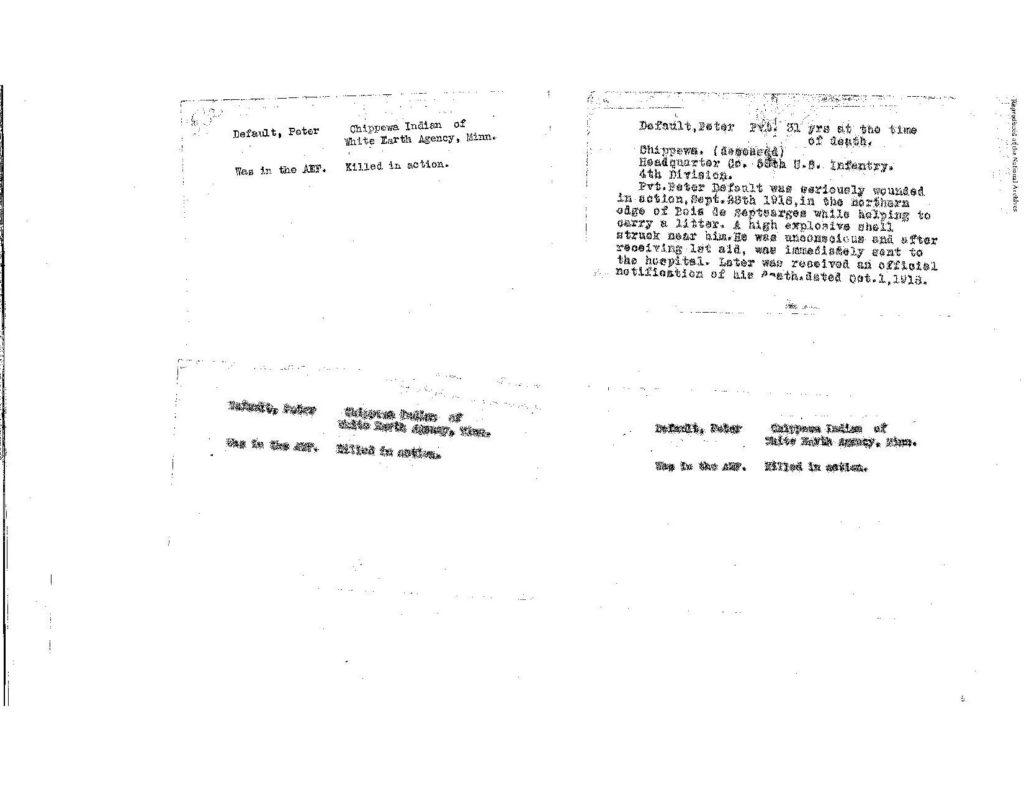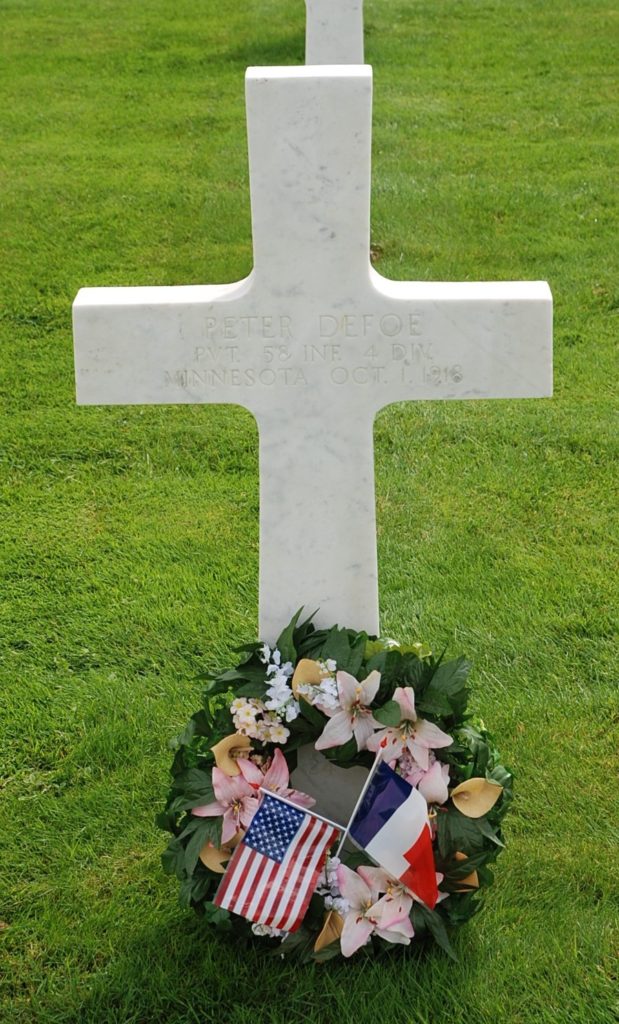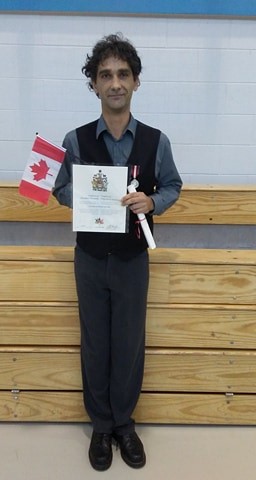Even today French locals, other Europeans and Americans find themselves drawn to the Meuse-Argonne region of France. Once drawn there, many return time and again; often working on a multi-year research or preservation project. In this irregular interview series, the Webmaster hopes to introduce readers to some of these individuals and their labors of love.
This month’s person is a bit unique: He is a Frenchman who recently became a Canadian citizen. He has never visited the Meuse-Argonne. Nevertheless, his work in documenting Native Americans from the United States and Canada who fought in the world wars has highlighted the role that Native Americans played in that battle.
1) What are your name, nationality and occupation?
My name is Yann CASTELNOT. I work in a pig slaughterhouse as an official job, but my military research takes up as much time.
On 7 September, 2017 I received my Canadian citizenship. I have lived in Canada for twelve years; but I am originally from France, what is now called the “Hauts de France” Region, more precisely the Arras – Lens – Vimy Sector.
2) Which languages do you speak, and how fluently do you speak them?
By my mother tongue, I prefer communication in French, but I also send a copy in English. Sorry if the translation is a bit bad.
3) When was your first visit to the Meuse-Argonne?
I have never had the opportunity to visit the Meuse-Argonne Sector. One day maybe; but many people go there after my research.
4) What research or preservation projects are you working on currently?
To understand my interest, we must go back a little in time. My region of origin is a part of the Western Front of the Great War, the British Sector, flanked on the north by Belgium – Flanders – Ypres and on the south by the Somme. My liberators for the two world wars come from the British Empire, including the Canadians. My region is dotted with military cemeteries, forging respect for all of its men and women who fell during the world wars. Just in my Department alone, military cemeteries and monuments contain 600,000 soldiers!
When I was a child I became passionate about Native Americans; trying to find out more about these people. In 2000 I saw a document about a visit to the U.S. by Marshal Foch, paying homage to Amerindian veterans of the Great War. Wanting to learn more about Amerindian participation during the world wars, and realizing that there was little information at the time on the subject, I embarked on the creation of the Ameridian soldiers database. I began with the Canadians during the world wars, and then I included the Americans, to finally include all the wars. My names go from the Spanish Conquistadors in 1519 until today. I also record all the documents concerning them, thus creating a file on them, not forgetting the medals and decorations received.
Just to give an idea, I have 130,000 names and 27,000 documents. I have recorded 18,000 deaths, including 4,100 deaths in service, all within 373 Amerindian nations. The list of graves on my site contains 15,400 graves in 2,262 cemeteries in 24 countries around the world. I also have more than 4,400 medals and decorations listed. These figures date from July 2016 and are no longer up to date. A big update of the website and data will logically be made in 2018.
Only for the First World War, my database contains 14,700 names including 9,100 originating in the USA; and more than 1,100 deaths in service. Within the Meuse-Argonne American Cemetery, I counted 21 Amerindians. In the same Department, not far away, you also have an Amerindian tomb of World War II at Louppy le Chateau.
5) Can you give us an example of your work?
There was Peter DEFOE, Chippewa Indian. He died on 1 October, 1918. He is one of the least known names in the cemetery, but one of the easiest to document. The document cards come from the archives of the Indian Affairs Office, which is one of the basis for building my list. The lists for the selective service let me know that he was conscripted. He signed his sheet on 5 June, 1917 and declared himself to be born on 3 April, 1887 in Bayfield, Wisconsin. At the time of his registration, he declared himself working in a mill near Lengby (?), Minnesota.
I used the U.S. Navy Boarding Sheets to find his registration number (2109421) and confirm that he was also serving with the HQ Company, 58th Infantry, 4th Division, AEF.
Data from the American Battle Monuments Commission allowed me to learn that he is buried in the Meuse-Argonne American Cemetery, Plot E – Row 21 – Grave 24.
Be careful not to confuse him with Peter J. DEFOE, who was also born in 1887, but is not part of the same family.

Pieces of information on Private Default from the National Archives. Interesting to note that the name is spelled differently than on his cross in Romagne.
6) How has your research been received by others?
For my research I received in 2013 the Queen Elizabeth 2 Diamond Jubilee Medal for my contribution to Canadian history. This year, I am the recipient of the Sovereign’s Medal for Volunteers for my outstanding work in Canadian memory.
However, I would like to point out that I am often criticized on my research work, since my data do not correspond to the official versions of the story. Authors or historians are simply copying other authors and historians, who themselves had copied other authors and historians… In short, for 100 years we just copied the same information without checking it. For example, the first code talkers were not the Choctaws during the Meuse-Argonne Offensive, but Cherokees from North Carolina, almost one month before in the Somme Sector. The estimate of 12,000 committed is everywhere, but my research gives an estimate of 13,500 – 14,000 committed. The list of errors is long.
7) How can readers contact you for assistance or for more details?
People can contact me via my email address, [email protected], or via my website, http://nativeveterans.e-monsite.com/. The website also contains a form to help me complete the list.
8) Any other comments?
None



